Nowruz (also spelled as Noruz and Navrooz), means a new day. It is celebrated on March 20 or 21, on the day of astronomical vernal equinox. So, it marks the beginning of spring. The International Day of Nowruz is celebrated by many nations, including Iranians. It brings many individuals, families, countries and nations from different parts of the world together, in a celebration of life and renewal.
What is Nowruz?
On the day when spring begins, also begins a new day, Nowruz. Nowruz, or Noruz, literally means a new day, in Persian. It marks the start of not only the spring, but also the New Year in Iranian calendar.
The celebration dates back to the ancient times, at least 2500 years ago. Even though the exact date is not clear, it is enough time for this tradition to become the heart and soul of Iranian celebrations.
Even though Iranians consider the celebration to be originated in Iran, many neighboring countries also celebrate the new year on Nowruz. In addition to this, Nowruz has been internationally recognized as the day when spring begins. It usually falls on March 20 or 21.
Thanks to this, many other countries, celebrate Nowruz. In fact, in 2009, Nowruz was inscribed as an Intangible Cultural Heritage of Humanity by the United Nations General Assembly. The main reason is that by marking the start of spring, Nowruz, brings people of different origins, cultures, and nationalities together in peace and harmony.
When is Persian New Year?
Nowruz means new day in Persian. It falls on the first day of spring, on March 20 or 21. As the nature comes alive and a new chapter begins in nature with Nowuz, a fresh new year also begins in the Iranian Calendar.
Because of the importance of this celebration and start of the Persian new year, Iranians go on a spring holiday. So, if you visit Iran during this time, you will find most companies and banks closed for 5 days. This is while the schools and universities go on a 13-day break.
This is a good time for many Iranians to travel too. So, tourist attractions and historical cities are usually populated with enthusiastic travelers from different parts of Iran, during Nowruz.
What are some of the celebrations of Nowruz in Iran?
As Nowruz coincides with the Persian New Year, celebrations for the two occasions have become interrelated in Iran. Since the ancient times, Nowruz celebrations have undergone many changes.
For example, it is said that during the Sassanid era, 3rd to 7th centuries AD, the celebrations were divided into 2 parts. The smaller Nowruz celebrations (or public) took place from 1st to 5th of Farvardin (March 20/21-25/26). During this time, different classes of the society visited the king on each day, congratulated the new year, and shared their problems. By the 6th day, the Shah would have granted many of his visitors’ wishes. After that he only met the court members and aristocrats.
Nowadays, Nowruz celebrations are based on getting ready to become anew, appreciating life, and being grateful for ones nearest and dearest. Celebrations usually begin early on, before Nowruz, and end by the 13th day of the month.
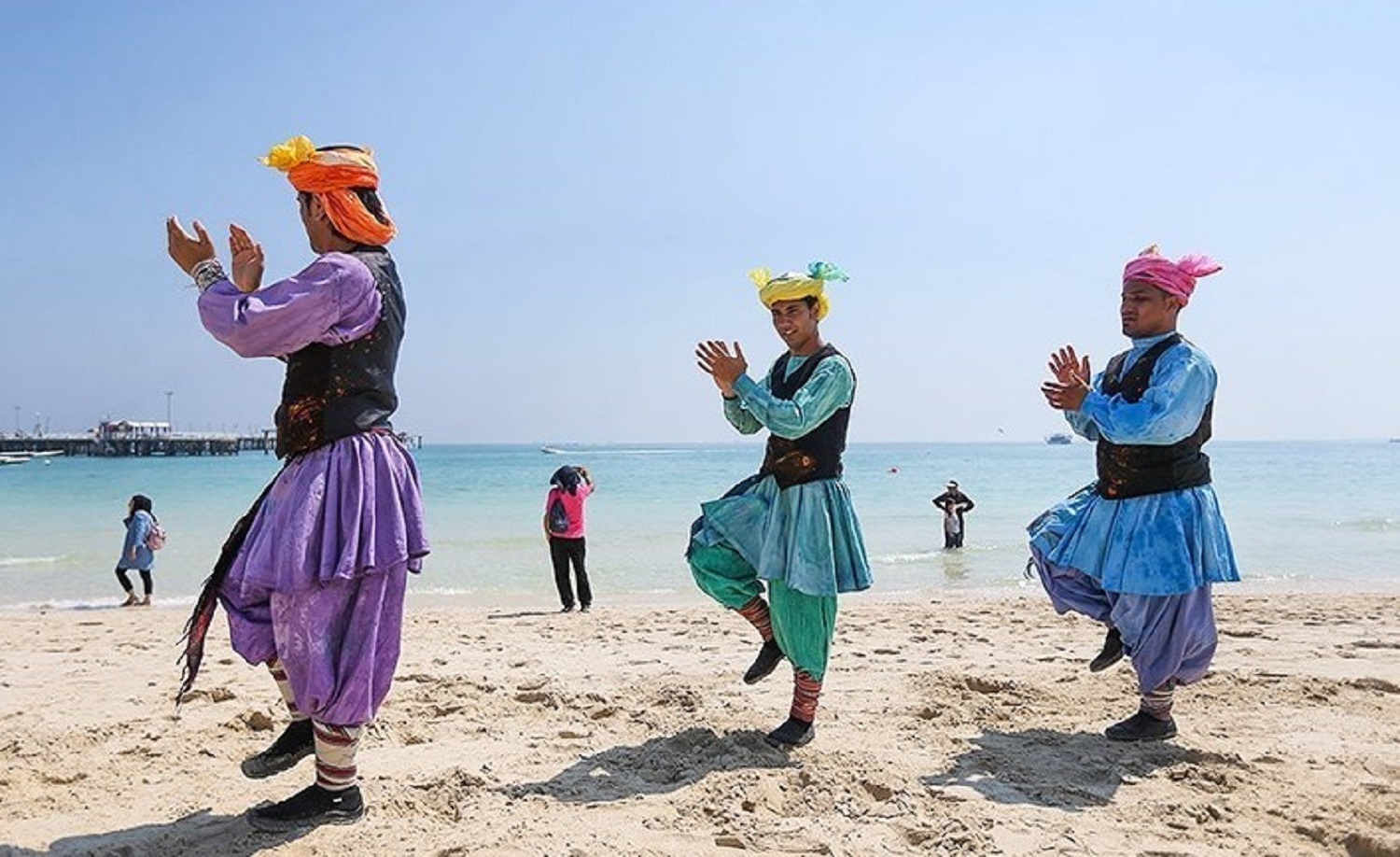
What are some of the Persian new year traditions?
As a celebration that comes with the renewal of nature, Iranians take this as an opportunity to revisit their connection to the nature. The freshness of the spirit, body, and the soul are very important. Here we have listed some of the most important traditions which are held every year.
• Khane tekani
Khane tekani means cleaning the house. Iranians start cleaning their houses about a month before Nowruz. The philosophy is that we collect things and make a dusty clutter by the end of the year. Also, all the events that come to pass leave their marks on the place where we live. The last month of the year is the best time to get rid of all the unnecessary items and the dirt left from the last year. With a new year ahead, a renewed and clean house will have enough room to capture all the good energy of a fresh start.
• Nowruz table decoration
New year decorations are an important part of the celebration in all countries. Iranians set up their colorful table decorations for their new year. This table is called Haft Sin; ‘haft’ means seven, and ‘sin’ is the name of the letter s in Persian alphabet. Iranians put 7 items whose names start with this letter, plus some other object on the table. While nowadays this table is more decorative, in the past, some of the items were consumed, especially when guests visited. These items include:
Sabzeh: lentils sprouts, barley, wheat, or bean sprouts which are grown in a dish.
Senjed: known as Persian olive or Russian olive
Samanu: a kind of pudding paste made from germinated wheat
Serkeh: vinegar
Seeb: apple
Seer: garlic
Somagh: sumac
The other items include coins, a table clock, hyacinth, a mirror, candles, eggs (usually painted and decorated), sweets or pastries, goldish, and a book of wisdom such as the holy Quran, Hafiz, Shahnameh, etc.
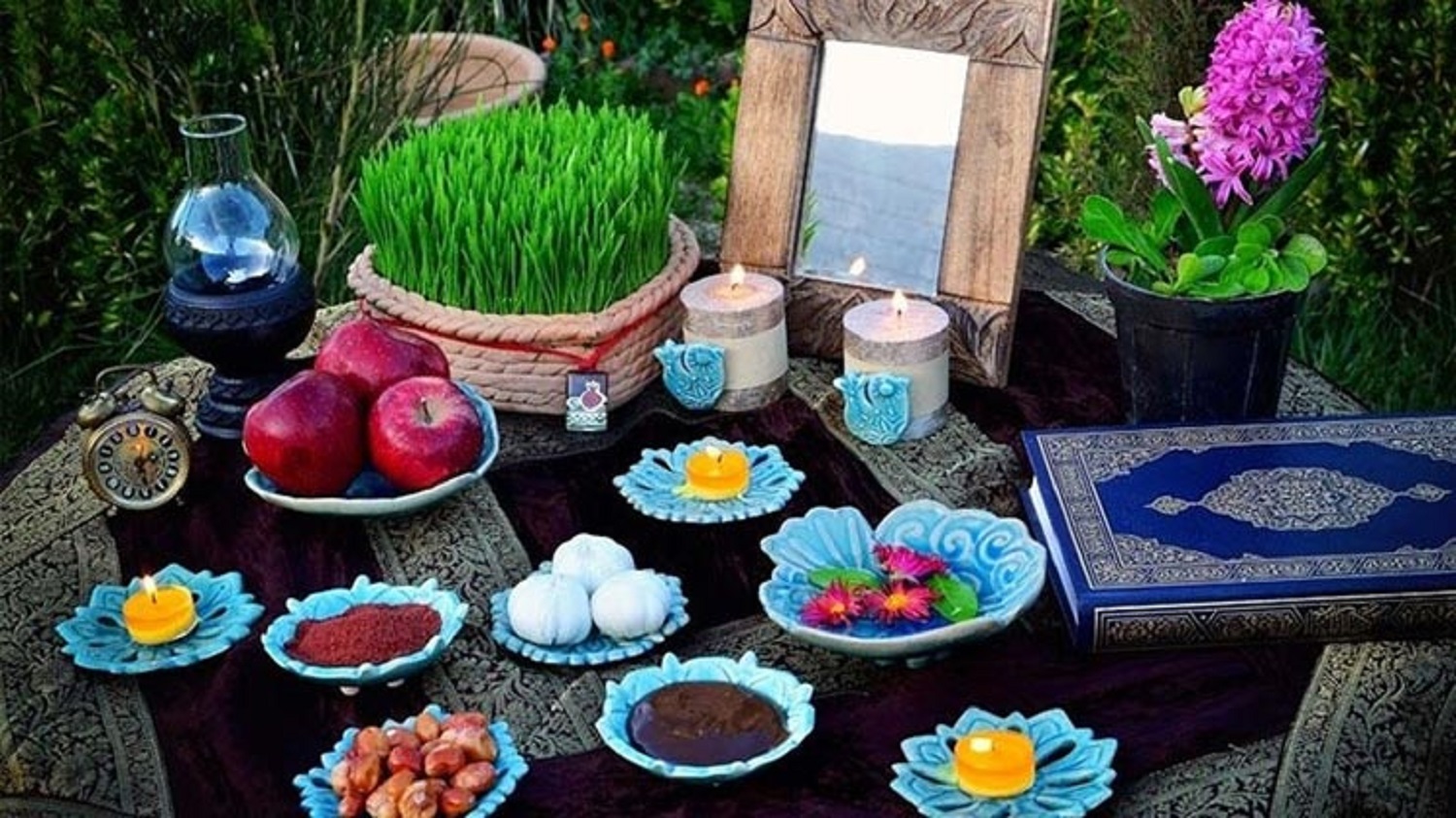
• Wearing new clothes
Iranians usually buy new clothes to wear during Nowruz. It is believed that if you welcome the new year in old clothes, you won’t be lucky during the new one.
Another historical tradition was taking a bath. In the past, when maintaining personal hygiene at home was harder, people visited public baths. So, they didn’t get to take a bath regularly. But before Nowruz, everyone went to the bath to be clean for the new year.
• Nowruz greetings
Iranians usually wear new clothes and welcome the year next to their close relatives and family members. After this, they visit their extended family and relatives to wish them a happy new year. It is common that the oldest relatives are visited first, because respecting the elders is considered a virtue.
• Holiday gift-giving
When visiting relatives, the host usually gives gifts to the guests. This is especially done when there is a young guest in the house, the host who is older in age, gives a gift to the guests who are younger.
• Sizdah bedar: 13th day of Nowruz
One of the interesting celebrations of Nowruz is Sizdah bedar, also called the day of nature. Sizdah means 13 in Farsi, and is considered as an ominous number for Iranians. The common belief is that by celebrating Sizdah bedar, people drive the ominous spirit away from themselves. But there is a longer story behind this day.
In the ancient Iranian calendar, each day of the month had a name. The 13th day of the month was named after the goddess of rain, Tishtariyeh. In order to have a blissful year, Iranians would pray the god of rain on this day and wish for more rain in the upcoming year. After praying, people used to go to the nature and celebrate the bounties of nature there.
Nowadays, people still prefer to go to the nature and spend time there. In addition to this, some traditions are associated with this day.
- Sabzeh Gereh Zadan: Literally, this means to tie knots in Sabzeh (the grown sprouts of lentils, etc. used for Haft Sin). Especially young people do this as a symbol of reconnecting to the nature, to stay young and fresh. They also wish to find their soulmate or get married during the coming year.
- Throwing 13 stones backwards: This tradition is especially held with Kurdish people. With each stone, the person who is throwing them, symbolically throws away a bad omen and makes a wish.
- Eating kahoo and sekanjebin
- Eating Ash Reshteh, a kind of thick soup.
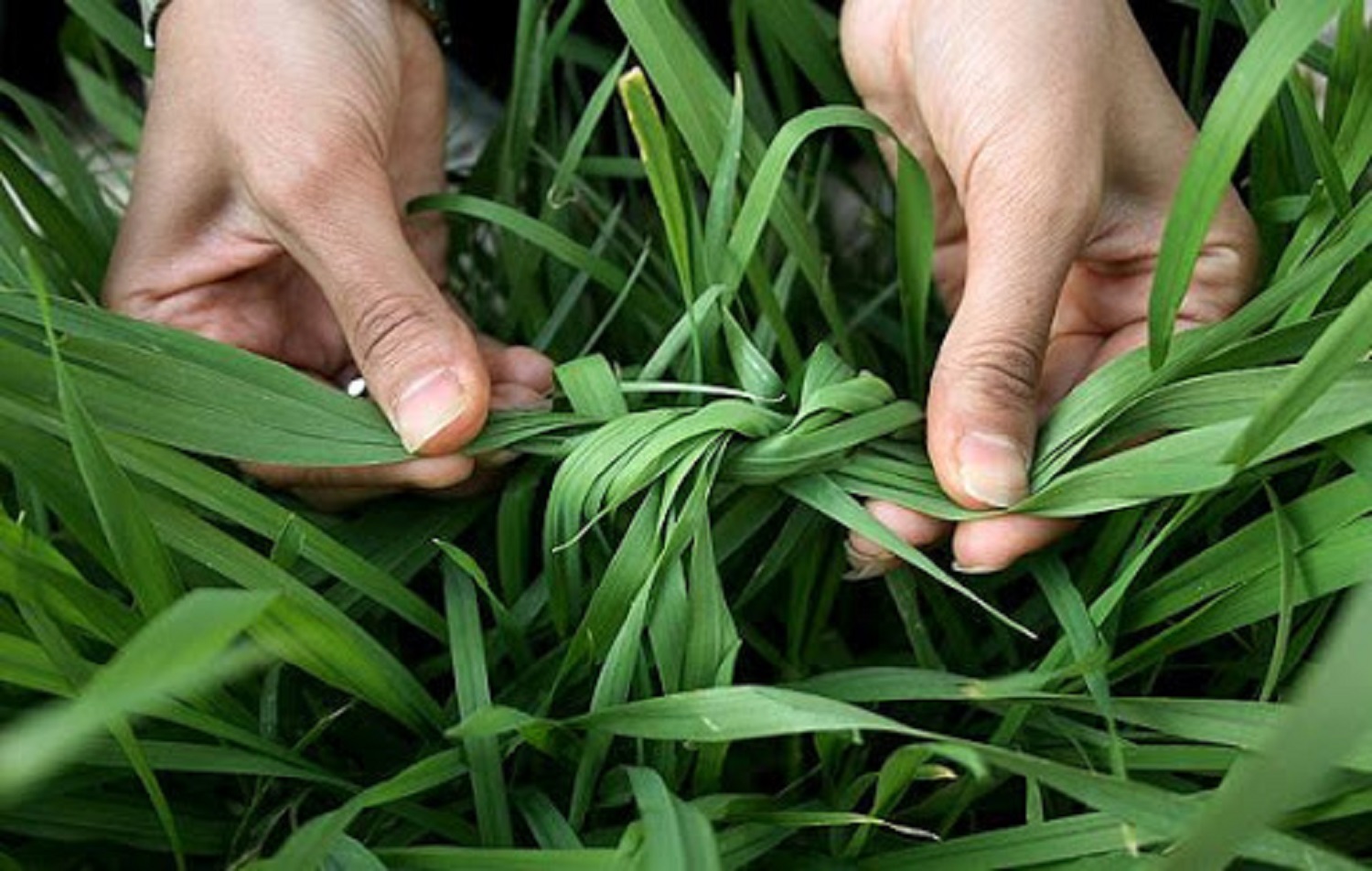
What is Chaharshanbeh Suri?
You might have heard about the Iranian fire festival. It is held on the eve of last Wednesday of the year. In order to welcome the new year, Iranians do everything possible to be clean, fresh, and ready. After cleaning their houses, it is time to clean their bodies and souls. So, people light up fire and jump over it, wishing the sacred fire to give them a happy and healthy soul.
Nowruz Food
Special occasions all for special food, right? Nowruz is no exception. The most famous dish prepared on Nowruz is ‘sabzi polo ba mahi’. In this dish, rice is cooked with dill and served with fish.
A famous sweet desert made during this time is samanoo. Samanoo is a kind of paste made from germinated wheat. Making samanoo takes a long time and requires special expertise. In most countries, such as Iran and Afghanistan, there is a special ritual combined with songs for making samanu.
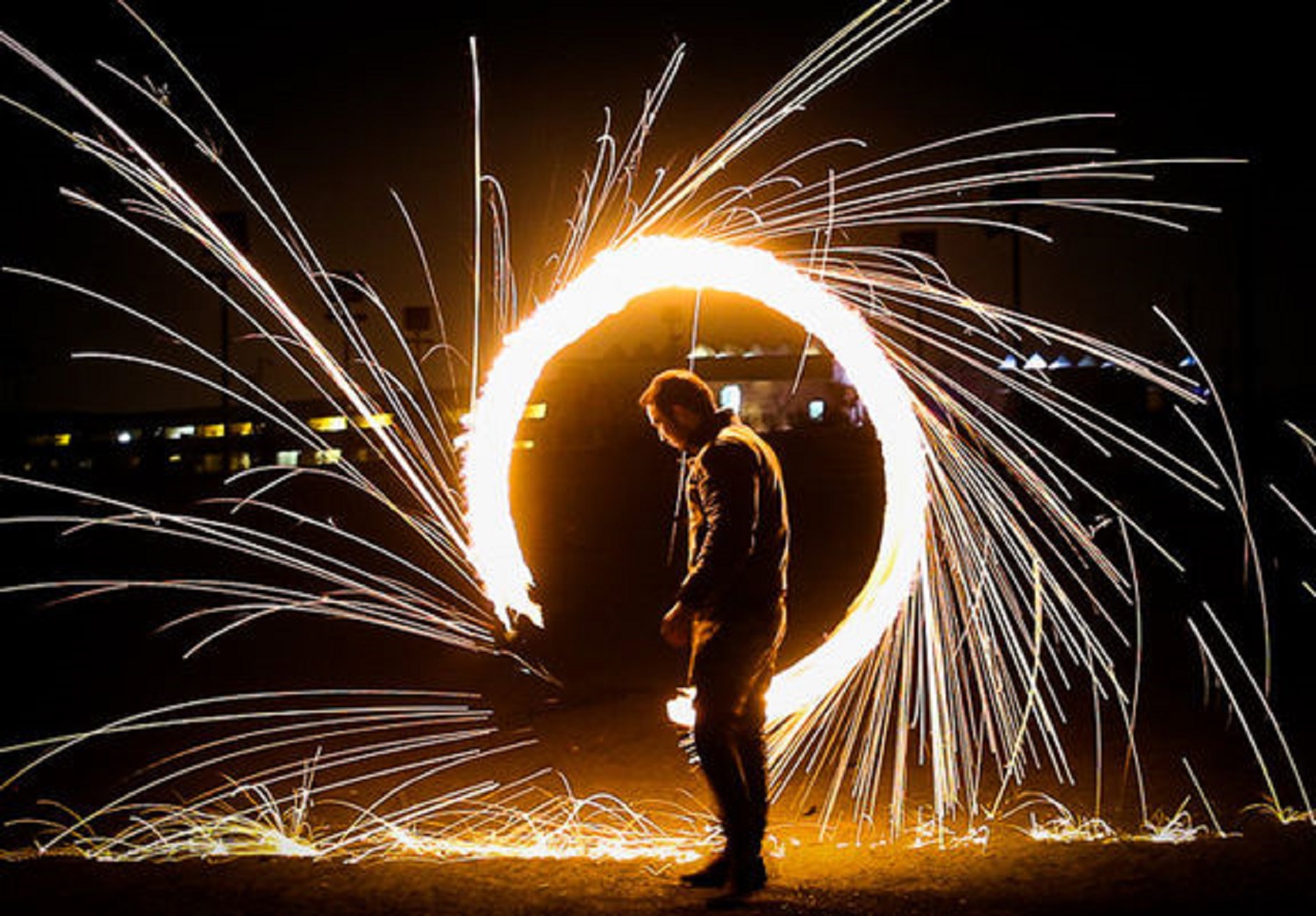
FAQ
Before new year, Iranians usually clean their houses, buy new clothes, and get ready for a fresh start in the new year. Celebrations begin before Nowruz, on Chaharshanbe Suri. It is celebrated on the last Wednesday of the year, when people put up fire and jump over it.
During Nowruz, Iranians usually get together to greet the new year next to their family members and relatives. Most of the people travel during the holiday and visit their relatives.
Iranians usually wear new clothes on new year. In some parts of the country, such as in Gilan and Mazandaran in the north of Iran, and Kurdish people in the west, wear their beautiful traditional clothes for Nowruz and the Persian new year.
Most of the important celebrations in Iran are associated with the nature, and the relationship of human beings with it. The Persian new year is related to the ancient as well as international festival of Nowruz. Nowruz marks the start of spring and the renewal of nature. It usually falls on March 20 or 21, on the day of astronomical vernal equinox.
The international festival of Nowruz is celebrated worldwide. In many countries in Central Asia, the Middle East, Caucasus, the Balkan countries, and those near the Black Sea basin celebrate the renewal of nature. This is why the celebration has been inscribed by United Nations, as and Intangible Cultural Heritage of Humanity.
In Iran, people get together to celebrate the arrival of spring and the Iranian new year during Nowruz. The country announces a 3 day long official holiday, while schools and universities are closed for 13 days. To celebrate the day, they decorate a table called Haft Sin, and try to be next to their loved ones when the new year begins.
Additionally, people normally travel during this time or visit their relatives. In the meantime, they make sure to wear new clothes, set their tables with different kinds of food for their guests, and give a gift to their guests, especially the young ones.
On the 13th day of Nowruz, people picnic in the nature. This is also called the day of nature in Iran. They celebrate the day with their friends and relatives out in the nature. It is costumery that people tie knots with their grown sprouts, to reconnect with the nature. Also, single people wish to get married in the new year while tying a knot.
As the Iranian new year is tied to the orbit of the earth around the sun, and it is meticulously tied to the order of stars, the time when the new year begins differs from year to year. In addition to this, even the day may change depending on the kind of year (leap year or normal year). That is why the date varies between March 20 or 21. For example, in 2020, the Iranian new year will begin on March 20, at 7:19:37 am.q
When celebrating the new year, Iranians usually use two sentences. They either say ‘Sale no mobarak’ which means happy new year, or ‘eyde shoma mobarak’ which refers to both the new year and Nowruz.

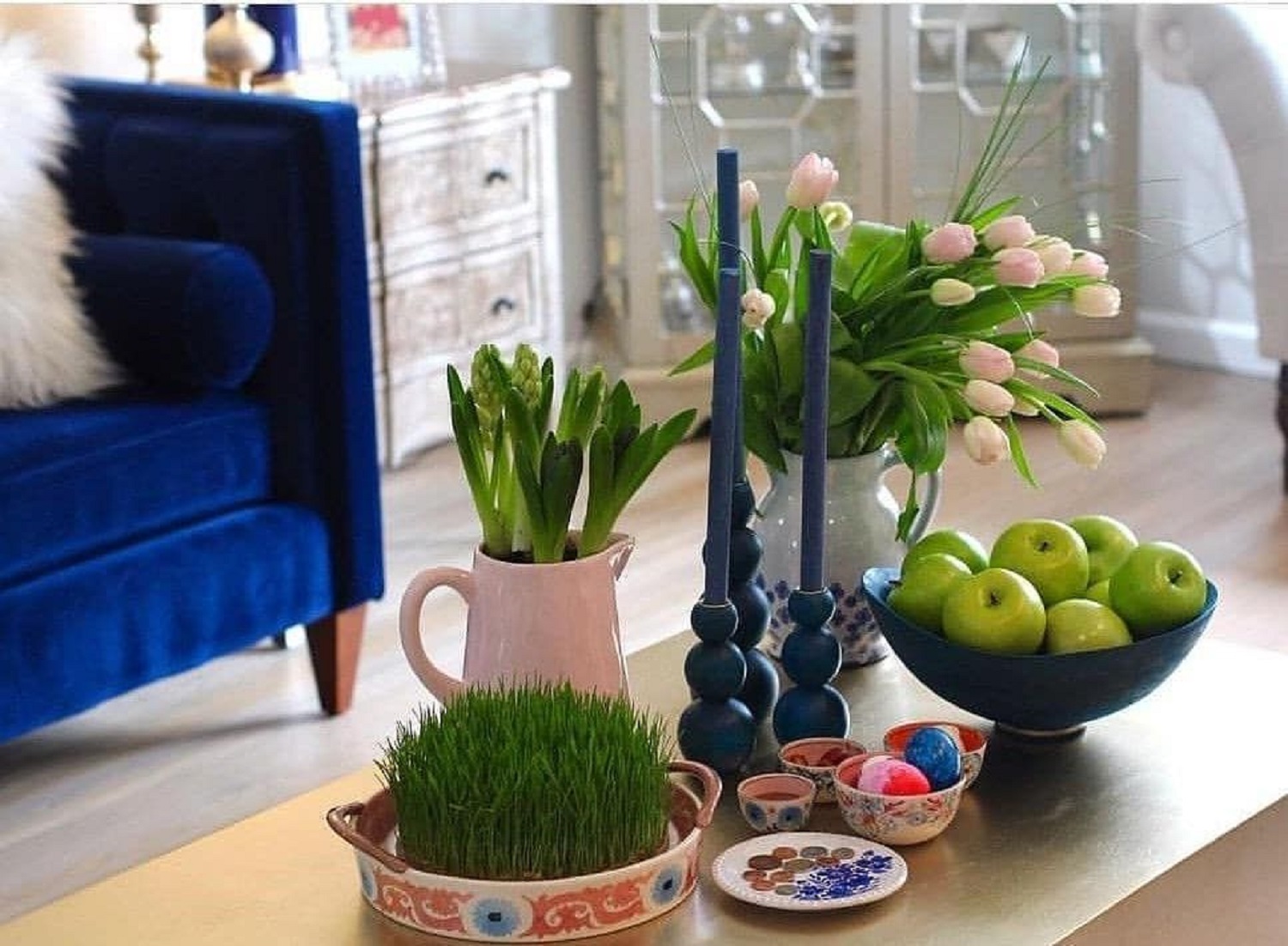

Comment (0)